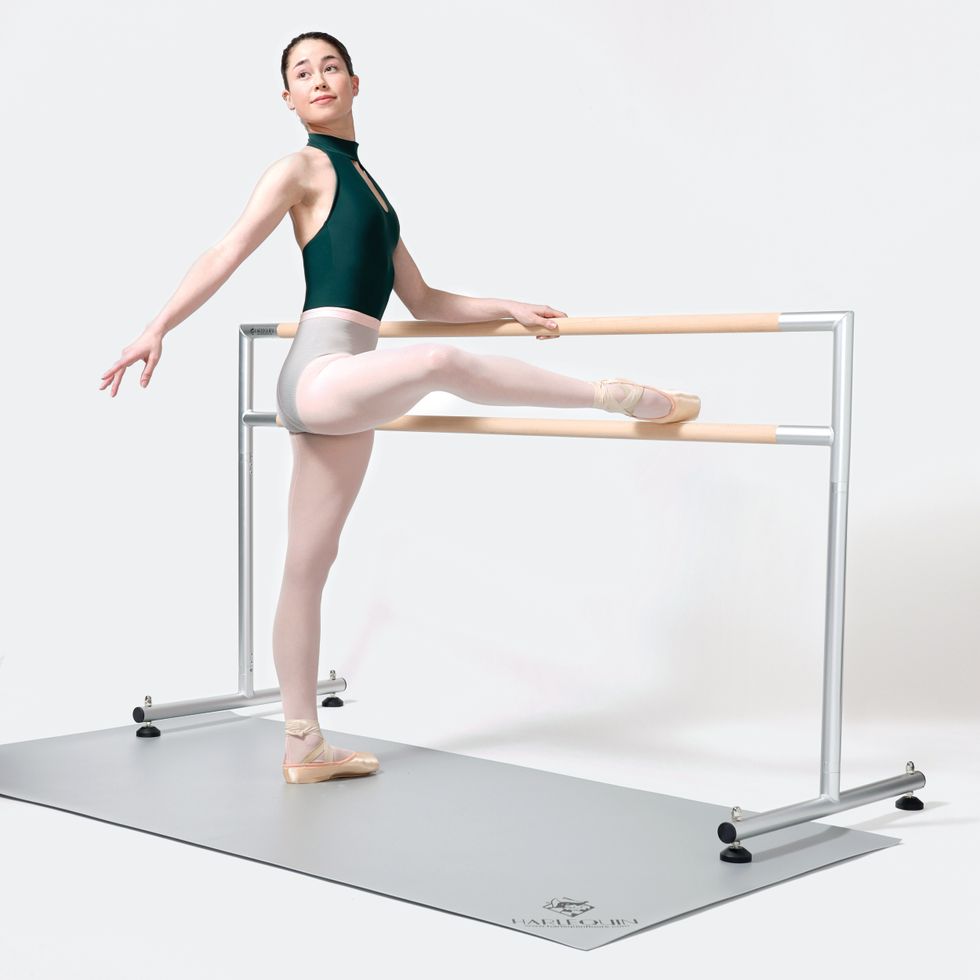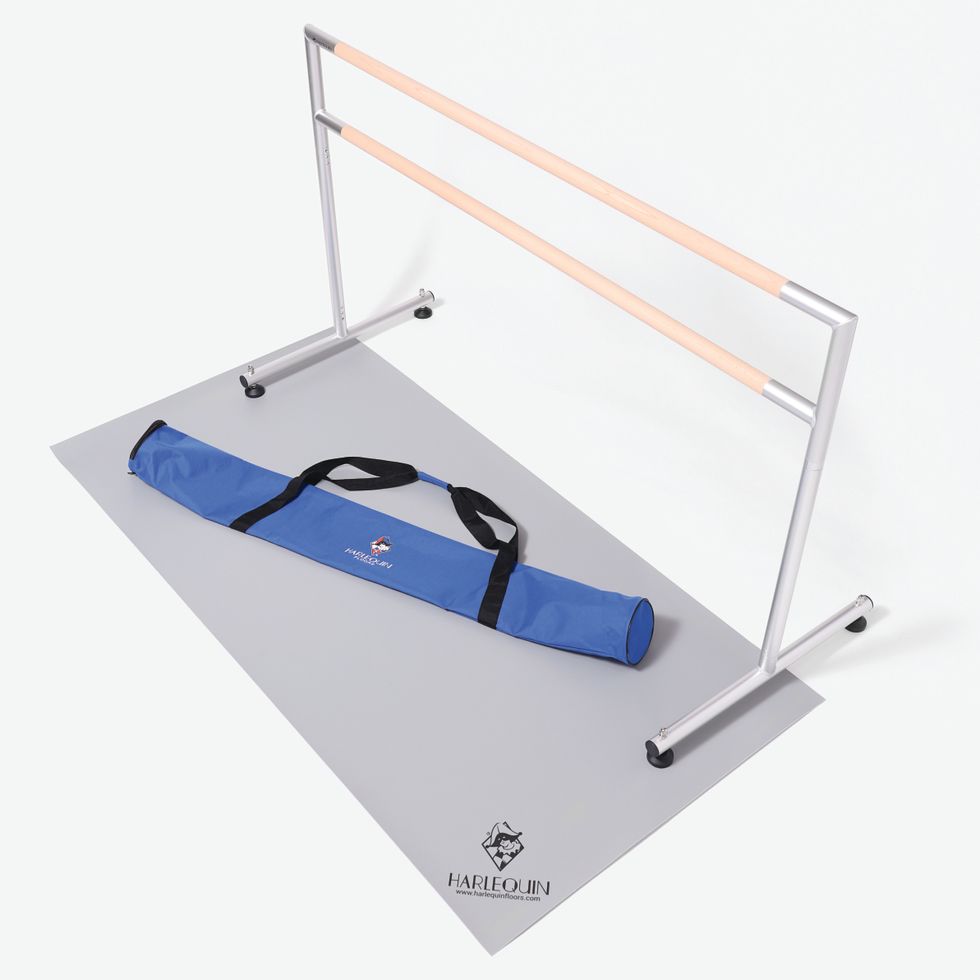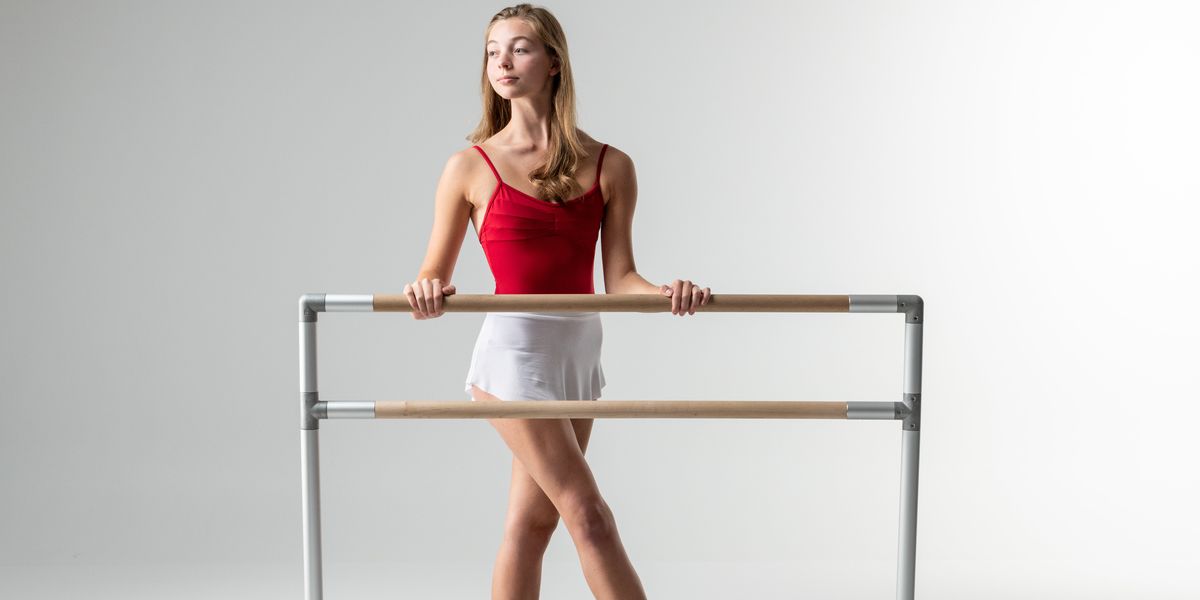Why Your Barre Can Make or Break Your At-Home Dance Training
Throughout the pandemic, Shelby Williams, of Royal Ballet of Flanders (aka “Biscuit Ballerina“), has been sharing videos that capture the pitfalls of dancers working from home: slipping on linoleum, kicking over lamps and even taking windows apart at the “barre.” “Dancers aren’t known to be graceful all of the time,” says Mandy Blackmon, PT, DPT, OSC, CMTPT, head physical therapist/medical director for Atlanta Ballet. “They tend to fall and trip.”
Many dancers have tried to make their home spaces as safe as possible for class and rehearsal by setting up a piece of marley, like Harlequin’s Dance Mat, to work on. But there’s another element needed for taking thorough ballet classes at home: a portable barre.
“Using a barre is kinda Ballet 101,” says 16-year-old Haley Dale, a student in her second year at American Ballet Theatre’s Jacqueline Kennedy Onassis School. She’d bought a portable barre from Harlequin to use at her parents’ home in Northern Virginia even before the pandemic hit. “Before I got it, honestly I would stay away from doing barre work at home. Now I’m able to do it all the time.”
Blackmon bought her 15-year-old stepdaughter a freestanding Professional Series Ballet Barre from Harlequin early on in quarantine. “I was worried about her injuring herself without one,” she admits.
What exactly makes Harlequin’s barres an at-home must-have, and hanging on to a chair or countertop so risky? Here are five major differences dancers will notice right away.
Less Distraction

Harlequin’s Studio Series Ballet Barre is lightweight and creates a stable surface no matter where you’re practicing.
Jayme Thornton
Working with whatever you can find in your house doesn’t do your muscle memory any favors. “Giving the dancer something to hold on to at the same height every day is very important,” says Blackmon.
To be able to concentrate on technique, a dancer needs consistency: If your makeshift barre is a different height from day to day, you’re constantly readjusting to a new placement of the arm that should be at rest. Designed for home practice or studio work, Harlequin’s new portable Studio Series Ballet Barre offers that regularity no matter where you’re practicing.
Better Alignment
If the back of your chair is too low or too high, it could throw off your entire alignment. “Technically the barre should be in a place so the arm can rest on it for support but not bearing a lot of weight,” says Blackmon.
Dancers need to be working “with good scapular, shoulder, and elbow position” throughout barre exercises, Blackmon adds. Harlequin Studio Series Barre answers that need by offering an upper and lower barre at 3′ 4″ and 2′ 7″, respectively, to mimic what you’d experience in the studio.
More Stability
A barre is designed to give you just the right amount of stability and the option to grip as needed. “Dancers should really only have fingertips on the barre because it’s a stable surface,” says Blackmon. She sees dancers over-gripping chairs because they don’t provide something secure to grab on to. Similarly, kitchen countertops or tables don’t offer enough support because the dancer’s hand can’t wrap around it.
With adjustable feet, Harlequin’s portable barres allow you to find a solid surface even on uneven floors. The Studio Series features an uncoated, sanded finish of beechwood, measuring 1.5 inches in diameter to offer a comfortable place for your hand to rest—and lightly grab on to when needed.
“If dancers are having to think too much or work too hard just to stay upright, they’re not going to be able to focus on the muscles they’re supposed to be using for their ballet exercises,” says Blackmon. “They’ll be compensating or using the wrong muscles to do movements that should be almost innate.” That could lead to overuse injuries, she says, possibly in the hip flexors or lumbar spine.
Extra Flexibility

Harlequin’s Dance Mat and Studio Series Barre effortlessly turn any space into your personal dance studio.
Jayme Thornton
Within the limitations of taking class virtually, you want as much flexibility as possible to create an optimal setup. Working with a portable barre gives you more options to film yourself from various angles and craft your space so you have as much room as possible. At only 12 to 14 pounds, Harlequin’s Studio Series Barre is easy to move to any area of the house. And specially priced under $300 just in time for the holidays, it’s an investment that will continue to boost your training with every Zoom class.
Feeling Like You’re Really in Class
Dancing from home challenges even the most dedicated dancer’s discipline. Using the proper tools gets you in the right mindset for class. “Having the barre at home really helps you dance like you were in a studio,” says Dale, who also uses a piece of vinyl marley from Harlequin. “It makes you feel like you’re where you’re supposed to be.” She’s excited to be potentially returning to New York City in January as ABT launches a hybrid of in-person and online classes—and will be bringing her floor and barre with her to make the most of every training opportunity.
With the holidays approaching fast and the dance world’s “new normal” in full swing, it’s the perfect time to gift the dancers in your life with tools to help them train their best. Visit Harlequin’s website to check out their Holiday Home Studio Collection.




